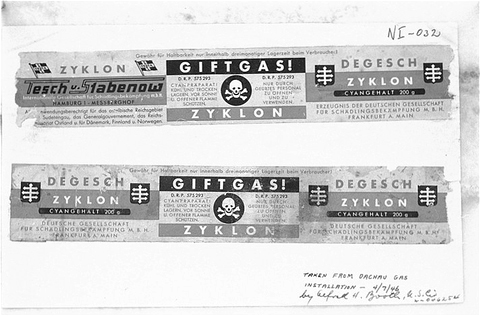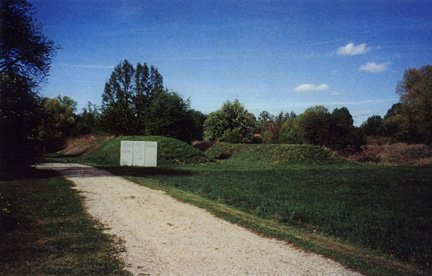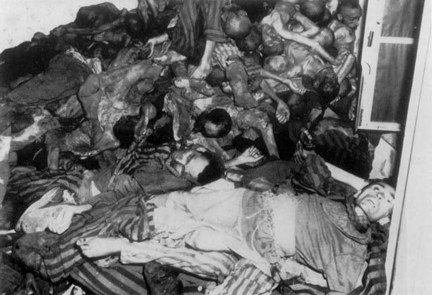Dachau Death Statistics The number of prisoner deaths claimed at Dachau varies widely, according to who is telling the story. The official report of the US Seventh Army, published in 1945, mentioned that 14,700 deaths had occurred at Dachau in the first quarter of 1945. Paul Berben, a prisoner in the camp, wrote a book entitled "Dachau, the Official History 1933 - 1945," in which he stated that 2,888 prisoners had died at Dachau in January 1945, 3,977 prisoners had died in February, 3,668 had died in March and 2,625 had died in April, for a total of 13,158 in the first four months of 1945. In the month of May 1945, an additional 2,226 Dachau prisoners died after the camp was liberated, in spite of the excellent care given to them by American military doctors. There were 196 more deaths in June before the typhus epidemic was finally stopped by the use of DDT and the vaccination of all the prisoners. At the American Military Tribunal held at the Dachau camp in November 1945, the prosecution stated that 161, 939 prisoners had been processed through Dachau between 1940 and 1945 and that over 25,000 of them had died. According to the figures in Paul Berben's book, the exact number of prisoners who died at Dachau during this period was 27,839. The US Seventh Army report stated that an estimated 229,000 prisoners had been processed at Dachau since the camp opened on March 22, 1933 including around 7,000 who had arrived in the last three weeks of April, 1945. The camp records showed that 206,206 prisoners had been registered in the camp in the 12 years that Dachau was a concentration camp, but in the chaos of the last days before the camp was liberated, some prisoners were not registered. Even before the war ended on May 8, 1945, General Dwight D. Eisenhower ordered that as many American soldiers as possible should be brought to see the gas chamber in the crematorium, where a sign outside said, "This area is being retained as a shrine to the 238,000 individuals who were cremated here. Please don't destroy." Since there were also 5,380 dead prisoners at Dachau whose bodies were buried on Leitenberg hill before the camp was liberated, this would mean that the death toll at Dachau was over 243,000. Since the total number of registered inmates at the main Dachau camp was 206,206, according to the camp records, this means that the US military claimed that there were 37,000 more deaths than the number of prisoners who were registered. Yet, there were almost 32,000 cheering survivors who greeted the American liberators. Later, a new sign was placed at the crematorium by Phillip Auerbach, a Jewish concentration camp survivor, who had been appointed the Bavarian Commissioner for Racial, Religious and Political Persecutees and the Commissioner for Restitution. This sign read "In the years from 1933 to 1945, 238,756 people were cremated here." The Rev. Martin Niemöller, a former prisoner at Dachau, saw this sign in November 1945 and was very upset by the high number of alleged deaths in the camp. There were 31,951 deaths at the main Dachau camp during the 12 years that the camp was in existence, according to a report made by the International Tracing Service at Arolson, Germany in 1977. The Tracing Service is part of the International Red Cross. This report was based on death records meticulously kept by the Nazis. The camp records were confiscated by the American Army and are currently kept in the National Archives in Washington, DC. However, Hans Zauner, the mayor of Dachau, claimed after the war that only 20,600 prisoners had died in the entire 12-year history of the Dachau concentration camp. If his claim is correct, this means that the American military inflated the number of deaths by more than a factor of 10. According to the camp records, there were 3,752 deaths at Dachau in the first seven years that the camp was in operation, but the death toll escalated to 13,158 deaths in the first four months of 1945. Just in the month of February 1945, there were 3,977 deaths at Dachau, more than in all of the seven years before the war. Most of these deaths in 1945 were due to a typhus epidemic in the camp which began in the fall of 1944 when prisoners were evacuated from the camps in Poland and brought to Dachau. Until recently, it was not generally known that the increase in the death rate at Dachau in the Spring of 1945 was due to a typhus epidemic. Without this knowledge, one might reasonably assume that the number of deaths at Dachau escalated dramatically near the end of the war because the Nazis were trying to kill as many Jews as they could before they were stopped by the Allied liberation of the camps. Regarding the last days of the war and the number of Jewish deaths, Daniel Goldhagen wrote in his best-selling book entitled Hitler's Willing Executioners: "Finally, the fidelity of the Germans to their genocidal enterprise was so great as seeming to defy comprehension. Their world was disintegrating around them, yet they persisted in genocidal killing until the end." However, it must be remembered that two-thirds of all the Dachau prisoners, including the prisoners in the sub-camps, were non-Jewish political prisoners with Polish Catholics in the majority. The Official Report of the US Seventh Army claimed that 29,138 Jews had been brought to Dachau and murdered in five gas chambers there between June 20, 1944 and November 23, 1944. Contrary to this claim, displays at the Dachau Memorial Site in May 2001 stated that four of these gas chambers were used only to disinfect clothing with Zyklon-B and that the fifth gas chamber at Dachau was never used or put into operation. In May 2003 a new display in the Dachau Museum claimed that one of the five gas chambers, the one that is disguised as a shower room, was used to kill a few prisoners. The Dachau camp records show that there were 28,838 Jews brought from Auschwitz to the Dachau main camp between June 18, 1944 and March 9, 1945. Before being transferred to the 11 Kaufering sub-camps near Landsberg, they were kept in quarantine for two weeks in an effort to prevent the spread of disease. At the Dachau main camp, these Jewish prisoners were dipped in a tub of disinfectant, then given a shower and issued clean clothes that had been disinfected with Zyklon-B. The photograph below shows two labels that were peeled off cans of Zyklon-B, taken from the "Dachau Gas Installation" on April 7, 1946. The labels were presented at the Nuremberg International Military Tribunal as evidence that Jews were gassed at Dachau. Ironically, the same Zyklon-B, that was used by the Nazis for killing the Jews in the gas chambers, was also used to save lives by killing the lice that spreads typhus.  The Official Report of the US Seventh Army also claimed that 16,717 non-Jews were executed at Dachau between October 1940 and March 1945. In addition, the Official Report said that there were 15,724 prisoners sent to Dachau who were never registered. Those who were not registered included prisoners brought to Dachau by the Gestapo for execution and Russian Prisoners of War who were executed at Dachau under Hitler's Commissar Order. Convicted German criminals were also brought to Dachau for execution. The photograph below shows the rifle range where Soviet POWs, who were believed to be Communist Commissars, were allegedly executed on the orders of Adolf Hitler. However, it was pointed out by a defense attorney for former Commandant Alex Piorkowski that the charge that 6,000 to 8,000 Soviet soldiers had been executed at Dachau was not proved by the American Military Tribunal at Dachau.  This photo above was taken in May 2003 by Donald E. Jackson, who attended the Dachau Memorial Service as a representative of the 40th Combat Engineer Regiment, which participated in the liberation of Dachau. Lt. Col. Felix Sparks, an officer in the 45th Thunderbird Division which participated in the liberation of Dachau, claimed that there were 9,000 unburied bodies at Dachau when the American liberators arrived. If true, this would mean that no bodies had been hauled out of the camp for burial for around three months. In spite of the fact that these dead bodies constituted a health hazard for the American soldiers, burial of the bodies at Dachau did not begin until May 7, 1945, by which time there would have been over 10,000 rotting corpses, if Lt. Col. Sparks is correct. Lt. William Cowling of the 42nd Rainbow Division, which accepted the surrender of the Dachau camp, wrote in a letter to his parents that there were around 1,000 bodies in the camp when it was liberated. In July 2001, on the Fox News TV show "Hannity and Colmes," Col. David Hackworth (retired) told Sean Hannity that there were many piles of dead bodies at Dachau when the American liberators arrived and that there were 10,000 dead Jews in just one of these piles. During a discussion about the liberation of Dachau, Col. Hackworth dismissed the murder of 520 Waffen-SS soldiers who had surrendered as "No big deal." There were numerous photographs taken at Dachau during the liberation and immediately afterwards, but none of them showed 9,000 or 10,000 dead bodies piled up in the camp. Photographs of Dachau when it was liberated show that there were unburied bodies piled up inside two mortuary rooms in the crematorium, and there was also a pile of bodies outside the crematorium. A photo of the bodies piled up outside the crematorium, taken a week after the camp was liberated, is shown at the top of this page and one of the mortuary rooms is shown in the photograph below.  Prisoners who arrived at the main Dachau camp after April 26th from other camps that had been evacuated were not registered. This included the survivors of the Death Train that had arrived on April 27, 1945, bringing evacuated prisoners from Buchenwald. The American liberators counted 2,310 dead bodies found on the "death train," according to the book "Dachau 29 April 1945," by Sam Dann. The train had left Buchenwald on April 7th and had taken almost three weeks to get to Dachau because the train tracks had been bombed by American planes. Victor Maurer, a Red Cross representative, who arrived at the camp a day or two before the liberation, wrote in his official report that there were 500 cadavers on the train. Col. Lawrence Ball, a prosecution witness at the proceedings of the American Military Tribunal at Dachau in November 1945, said that there were 38 cars on the train with 10 to 20 corpses in each of them. The photo below shows American soldiers posing beside some of the dead bodies on the "death train." The dead men in this photo were not prisoners at Dachau. They were German soldiers who had surrendered to Lt. William Walsh and were taken to the train to be shot by the American liberators.  Back to Table of ContentsBack to Dachau indexHomeThis page was last updated on June 19, 2012 |